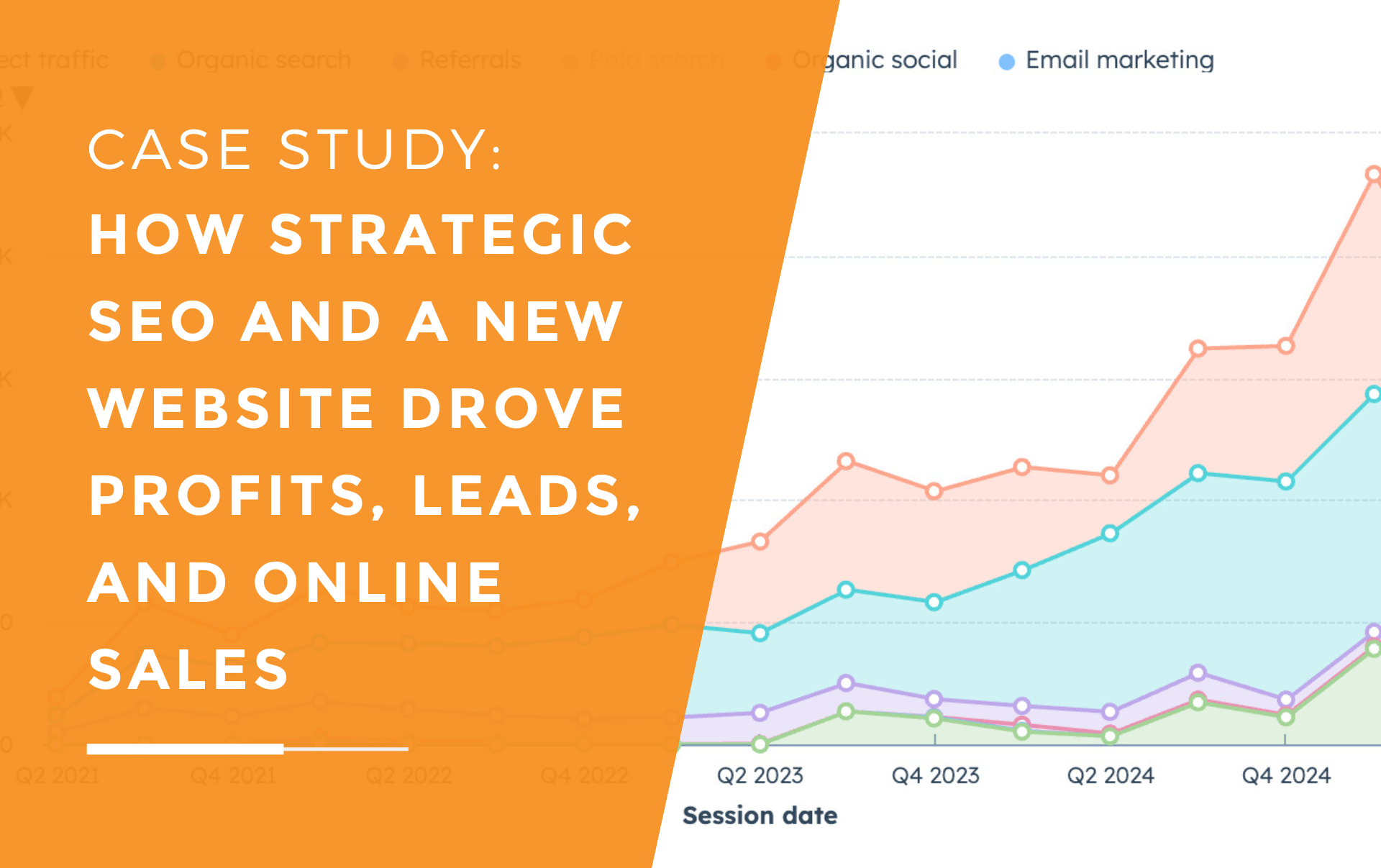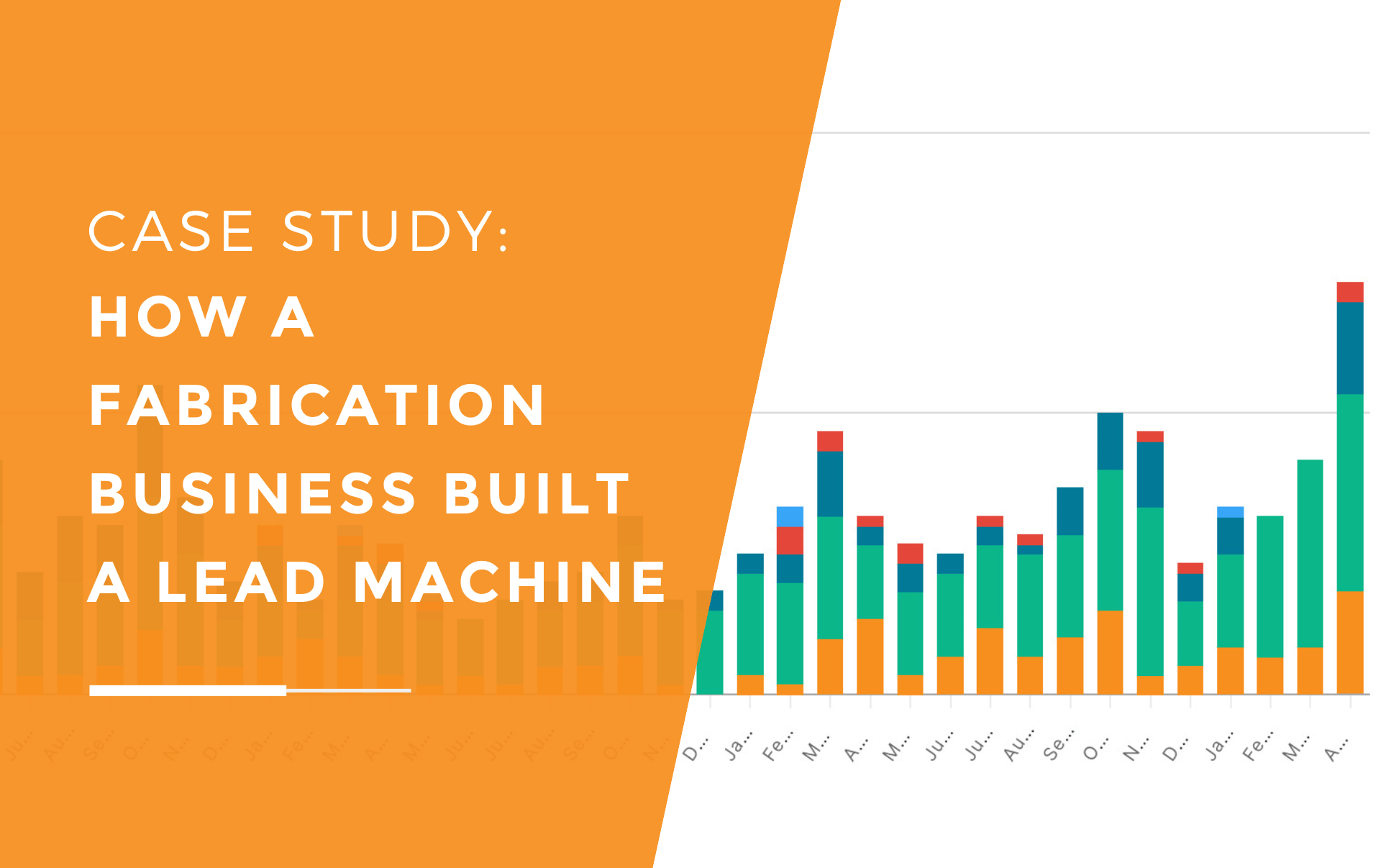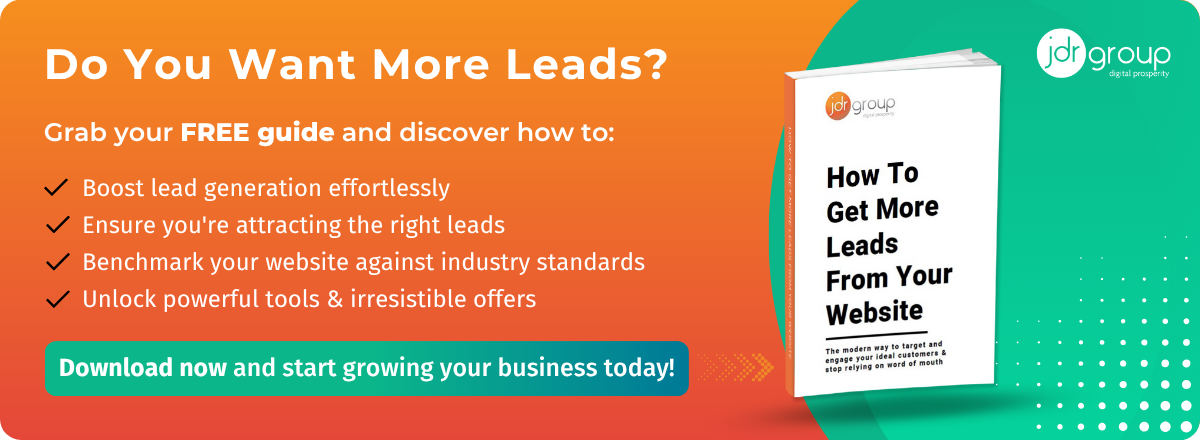Conversion Rate Optimisation: Turning Traffic into Revenue for SMEs
by Andrew Gibbins on 12-May-2025 12:30:00

Getting traffic to your website is important, but traffic alone won’t grow your business. What really matters is how many of those visitors take action. Whether it’s filling out a form, booking a call or making a purchase, your website should be designed to convert traffic into revenue.
That’s where Conversion Rate Optimisation (CRO) comes in.
In this guide, you’ll learn:
- What CRO is and how it works.
- Why user experience and buyer journey mapping are critical to improving conversions.
- How to optimise landing pages and test what works.
- What to look for in a CRO agency - and why JDR Group could be the right fit for your business.
Whether you're generating thousands of visits a month or just getting started, CRO helps you gain more leads without increasing your ad spend.
And this isn’t guesswork. It’s about using real data - user behaviour, analytics and testing - to improve performance in measurable ways.
Let’s dive in.
What Is Conversion Rate Optimisation?
CRO is the science of turning browsers into buyers by making every click count. Remove friction, guide users more effectively, and make the most of the opportunities you already have.
You're already investing in driving traffic to your website through Google Ads, SEO, social media, or email marketing. But if the majority of those visitors leave without taking action, you’re missing out on potential business. With CRO, you get more value from the traffic you already have by improving the percentage of users who take a desired action, whether that’s filling in a contact form or downloading a guide.
It’s a data-driven process that analyses how people use your site, where they drop off, and where to make improvements to guide them towards conversion. That might mean adjusting your page layout, improving your calls-to-action, speeding up load times, or rewriting headlines to better match your ideal customer’s intent.
It's not about assumptions or surface-level design tweaks. It’s understanding user intent and making it easier for people to take the next step. With the right CRO strategy in place, you’ll see higher enquiry rates, better-quality leads, and a far stronger return on your overall marketing spend.
Why CRO Matters for Your Business
If you're investing in digital marketing to drive traffic to your website, then Conversion Rate Optimisation (CRO) is one of the smartest and most cost-effective ways to grow your business.
Rather than spending more to get additional visitors, CRO helps you generate more leads and sales from the traffic you’re already attracting. Even small improvements in your conversion rate can have a significant impact on your bottom line.
For example, if you're getting 1,000 visitors a month and converting at 1%, that's 10 leads. Double your conversion rate to 2%, and you’re now generating 20 leads, with no increase in traffic or ad spend. That’s the power of CRO.
But the benefits go beyond just numbers. A site that’s optimised for conversions is also easier to use, faster to navigate, and more aligned with what your customers are looking for, so it improves both performance and user experience.
Here’s why CRO should be a core part of your marketing strategy:
- More revenue from the same marketing spend.
- Lower cost per lead and better ROI across all channels.
- Improved user experience, which builds trust and credibility.
- Competitive advantage - you’re not just attracting visitors, you’re converting them.
- Continuous improvement through data and testing, not guesswork.
CRO isn’t a one-off fix, it’s a long-term investment in the effectiveness of your website. If you’re serious about growth, conversions are where your marketing efforts either pay off or fall short.
Understand Your Customer’s Buying Journey to Improve Conversions
To optimise your website for conversions, you first need to understand how your ideal customers buy. Every sale follows a journey: awareness, consideration, and decision. Your website must support visitors at each step of that journey.
If you don’t know what your potential buyers are thinking, doing, and needing at each stage, you risk presenting the wrong content at the wrong time, in the wrong format. That means lost enquiries, wasted traffic, and missed opportunities.
Mapping out your customer's buying journey helps you:
- Identify where people are dropping off.
- Understand what questions they need answering.
- Align your content, layout, and calls-to-action with what your buyer actually needs at each stage.
- Reduce friction and build trust.
This isn’t just about UX, it’s about strategy.
Key Stages of the Customer Journey
Every buying decision typically follows four main phases:
- Awareness - The visitor has a problem or goal and is looking for general information. Your blog content, educational videos, and SEO play a big role here. The goal is to attract attention and position yourself as a credible expert.
- Consideration - They’re comparing options, researching suppliers, and evaluating who they trust. This is where product pages, service breakdowns, case studies, and reviews need to do the heavy lifting.
- Decision - Now they’re ready to act. Your pricing, CTAs, quote forms, and checkout process must be simple, clear, and friction-free.
- Post-Purchase - After the sale, your website can continue to play a role with thank-you pages, follow-up content, upsells, or support.
Every page on your site should have a clear purpose, and that purpose should tie directly to one of these stages.
Touchpoints That Influence Conversion
At each stage of the journey, your customer is hitting key touchpoints, the moments where they interact with your brand and make micro-decisions.
Some of the most influential touchpoints include:
- Blog articles and SEO pages (awareness)
- Landing pages and lead magnets (consideration)
- Product/service pages, testimonials, and comparison charts (consideration)
- Contact forms, quote requests, and checkout flows (decision)
- Confirmation pages, onboarding content, follow-up emails (post-purchase)
Each touchpoint is a chance to move the user one step closer to conversion. But if it’s not optimised for their needs at that moment, it can become a barrier.
That’s why CRO isn’t just about layout or design, it’s about aligning your entire website strategy with the way your ideal customer thinks, researches, and buys.

User Experience (UX) Design That Drives Conversions
User Experience (UX) plays a central role in CRO, but it’s important to recognise that UX and CRO are not the same thing.
CRO is about increasing the percentage of website visitors who take a desired action. UX focuses on making the experience of using your site smooth, intuitive and enjoyable. But the two work hand in hand - you can't improve conversions without first improving the experience.
A poor user experience is one of the top reasons visitors abandon a website. Confusing layouts, slow page speeds, clunky navigation or unclear messaging all create friction, and friction kills conversions. Get the UX right, and you create a website that feels effortless to use. This keeps people engaged and nudges them naturally toward enquiry, purchase or sign-up.
Core UX Principles That Impact Conversions
If you want your website to perform, you need to design with the user in mind. That means applying a set of core UX principles that support your conversion goals:
- Simplicity - Strip out anything that doesn’t help the user take action. Avoid visual clutter, confusing menus or too much copy.
- Consistency - Use familiar design patterns, buttons and navigation across your site so users know what to expect and how to interact.
- Accessibility - Make sure everyone can use your site, regardless of device, ability or screen size.
- Feedback - No matter how good your offer is, a poor experience will drive users away. Show users what’s happening, especially after they submit a form, click a button or take an action. Confirmation messages, progress bars and error messages all build trust.
These aren’t just design best practices, they directly impact how easy it is for users to convert. If your website is hard to use, people will leave before they take action.
Using Session Recordings to Improve UX (and Conversions)
One of the most valuable tools in your CRO toolkit is session recording software. These tools allow you to watch real users interacting with your site, giving you insights that analytics alone can’t provide.
You can see:
- Where users get stuck or hesitate.
- Which elements do they click (or ignore)?
- What causes confusion, frustration or drop-off?
- How people navigate your menus and scroll your pages.
These insights help you uncover hidden pain points, test hypotheses, and prioritise changes that will make the biggest difference to your user journey. Over time, regular session analysis allows you to continuously refine and improve your UX based on actual behaviour.
Pair session recordings with heatmaps, form analytics and feedback surveys, and you’ve got a full view of what is really happening on your site, and how to fix what’s not working.
Landing Page Optimisation Strategies
Your landing pages are some of the most important real estate on your website. They are often the first place a potential customer lands after clicking an ad or link, and they play a major role in whether that visitor takes action or clicks away.
A well-optimised landing page does more than look good. It captures attention, builds trust, and moves the user toward a specific goal, whether that’s submitting a form, downloading a guide, or making a purchase, as previously mentioned.
The purpose of landing page optimisation is to improve that performance. Every element on the page should be there to serve the user, reinforce your message, and increase the chances of conversion.
What Makes a High-Converting Landing Page?
To convert consistently, your landing page must deliver the right message - at the right time - to the right person. Here are the essential elements that make that possible:
- Clear Value Proposition
Communicate exactly what you offer and why it matters. What’s in it for them? Why should they act now? Your value proposition should lead the page - bold, clear, and impossible to miss. Use direct, benefit-led language. - Compelling Headline
This is the first thing people see. It should speak directly to the user’s problem or goal and give them a reason to stay and read more. - High-Quality Visuals
Use images, graphics or video to support your message. Visuals should be relevant, professional, and focused on helping the user understand what you do. - Strong Call-to-Action (CTA)
Make it clear what you want the visitor to do next - whether it’s booking a call, downloading a brochure or requesting a quote. Use action-oriented language like “Get My Quote” or “Download Your Guide.” - Social Proof
Add trust elements such as testimonials, client logos, case studies or review scores. These reduce hesitation and build confidence in your offer.
A good landing page removes distractions and keeps the user on one path toward action. That means no unnecessary navigation menus, no competing messages, and no unclear forms.
When you combine clear messaging with strong design and a focused user journey, your landing page becomes a powerful conversion tool, maximising the return on every click you pay for.
A/B Testing for Landing Pages and On-Page Elements
A/B testing is one of the most effective ways to improve conversion rates. Instead of guessing what will work best, you can test two versions of a page (or an element on a page) and let the data guide your decisions.
This process helps you identify what resonates with your audience and which changes lead to more clicks, more leads, and ultimately, more sales.
You can run A/B tests on:
- Entire landing pages (testing different layouts, messages or structures).
- Individual elements such as CTA buttons, images, forms, or headlines.
For example, using HubSpot’s CMS, we regularly A/B test call-to-action buttons for our clients, comparing different colours, graphics, placements or wording to see which drives the most click-throughs. HubSpot also makes it simple to A/B test full websites or landing pages, with built-in tools that allow you to create variations, split your traffic, and analyse results in real time.
How to Run a Smart A/B Test
A/B testing isn’t just about changing things randomly. You need a clear strategy. Here’s a simple process to follow:
- Identify What to Test
Choose a single variable. It could be a headline, CTA, image, form layout, or even pricing display. - Create Two Versions
Keep everything else the same. Only change the one element you’re testing, so you know what caused the difference. - Split Your Traffic
Use a tool like HubSpot, Google Optimize or another CRO platform to divide your web traffic evenly between the two variants. - Measure Results
Track the key conversion goal - click-throughs, form submissions, downloads, purchases - and compare the performance. - Implement the Winner
Implement the best-performing version, then move on to testing the next element.
Consistent A/B testing is a guaranteed way to improve your results, as the data will show what works best for your business.
Choosing the Right CRO Partner
Finding the right partner for conversion rate optimisation is crucial for the success of your business. An experienced agency can guide you through the CRO process with expertise, helping you achieve optimal results.
Not all CRO agencies provide the same level of service. It's important to do your due diligence and choose an agency that aligns with your business goals and has a proven track record.
What to Look for in a Conversion Rate Optimisation Agency
Choosing the right CRO agency is a critical decision. You’re trusting them to improve the results your website delivers, so they need more than technical know-how - they need to understand your business and how to turn traffic into revenue.
Here’s what to look for:
- Proven experience in your industry
Every market is different. Choose an agency that understands your audience and can back up their strategies with real-world results in similar sectors. - A data-driven mindset
CRO isn’t about guesswork. It’s about testing, measuring and improving based on actual performance. Look for an agency that puts data at the heart of their process. - Clear, proactive communication
You want to know what’s happening and why. Your agency should keep you updated regularly and be able to explain the impact of every change. - A complete skill set
Optimising conversions often means changing content, redesigning pages, testing forms or improving load speed. Make sure your agency can handle the full picture, not just one piece of it. - Flexibility and adaptability
CRO is an ongoing process. You need a partner who can react to test results and shift focus quickly to where the biggest gains can be made.
In short, look for a CRO agency that can act as a strategic partner, not just a service provider. You need a team that understands business growth, not just website tweaks.
The Benefits of Working with a CRO Agency
Partnering with a professional CRO agency gives you access to tools, expertise and insights that are difficult to match in-house, especially if your team is already stretched.
Here’s what you get:
- Access to advanced testing tools
From heatmaps and session recordings to multivariate testing and detailed analytics dashboards, we use the right tools to understand exactly how users interact with your site. - A fresh perspective
Sometimes it takes an outside view to spot what’s holding your conversions back. We’ll identify gaps and opportunities you might never have noticed internally. - Time and efficiency savings
CRO takes ongoing attention and consistent testing. By outsourcing to a specialist team, you free up internal resources and get better results, faster. - Better conversion rates and better ROI
Every percentage point increase in your conversion rate means more leads, more sales and more revenue from the same traffic. - Tailored strategy
We don’t believe in templates. Your CRO plan will be built around your website, your customers and your business goals.
Investing in CRO isn’t just about improving your website, it’s about making your marketing budget go further, generating better leads, and growing your business more predictably.
Why Choose JDR Group as Your CRO Agency?
At JDR Group, we don’t just increase conversion rates, we help you build a website that grows your business.
We combine strategy, creativity and data to turn your website into a lead-generation machine. From customer journey mapping to user experience design, A/B testing and analytics, our team takes care of the full CRO process so you can focus on running your business.
What sets us apart is how we work. You’ll get:
- A dedicated team of CRO specialists, designers, copywriters and strategists.
- A data-first approach that prioritises actions proven to get results.
- Full transparency, with regular reporting and insight into performance.
- Custom strategies tailored to your audience, your goals and your website.
- A proven system that has worked across 3,000+ businesses.
We don’t make changes for the sake of it. Every recommendation is grounded in performance data, aligned with your business objectives, and implemented to maximise results.
If you’re ready to turn more visitors into leads and more leads into sales, we’re here to help.

Turn More Website Visitors Into Leads, Enquiries and Sales
Conversion Rate Optimisation (CRO) isn’t just about improving numbers on a spreadsheet - it’s about making your website a stronger, smarter, more effective part of your sales process.
By improving how users experience your site, guiding them more clearly through the buying journey, and testing what works (and what doesn’t), you can unlock more value from the traffic you already have. The result? More leads, better quality enquiries, and a stronger return on your marketing investment.
In this article, we’ve covered the key elements of a high-performing CRO strategy:
- How to align your site with your ideal customer’s buying journey.
- The role of UX in reducing friction and building trust.
- Why landing pages and CTAs need to be focused and compelling.
- How A/B testing and data-driven decisions fuel continual improvement.
- What to look for in a CRO agency, and how the right partner can transform results.
If you’re serious about generating more leads and turning your website into a revenue-generating machine, CRO should be a priority.
Ready to Start Improving Your Website Results?
If you want to find out how well your website is performing - and where there’s room for improvement - download our free guide, How To Get More Leads From Your Website.
You’ll learn:
- The most common reasons websites fail to convert.
- Quick wins you can implement today.
- A framework for turning more visitors into customers.
👉 Download the FREE Guide Here
And if you'd like a tailored review of your own website and marketing performance, book a free discovery call with one of our experts. We’ll show you exactly how CRO fits into our proven 6-step marketing system - and how it can start delivering results for you.
You May Also Like
These Related Blogs

Digital Marketing for Materials Handling Business Drives SEO Growth, Leads & Online Sales
This client is a UK-based manufacturer & supplier of materials handling equipment, selling to the retail, construction, medical, aerospace, and en …

9 Vital Elements Every Homepage Should Have To Ensure They Generate AND Keep Customers
We have all been there, about to walk into a job interview to hopefully show the interviewer that we are right for the role. We get fresh haircuts and …

From 5 to 44 Leads a Month: How Smart Marketing Turned This Family-Run Aluminium Fabrication Business Around
This client is a family-run aluminium fabrication business specialising in manufacturing access solutions. They design and make a diverse range of pro …



